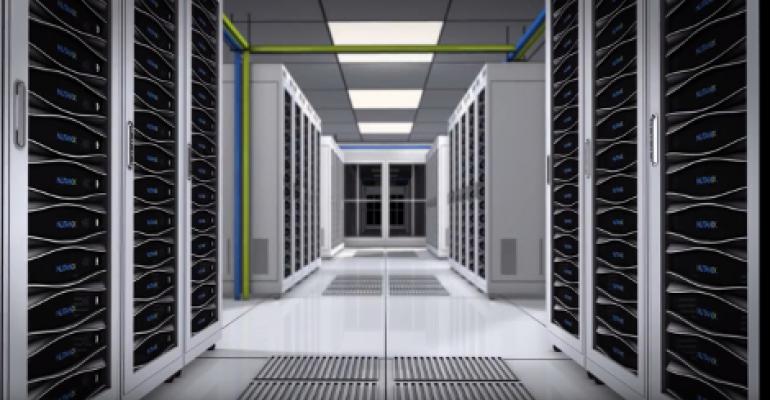Ahead of an ever-more-likely initial public stock offering, hyperconverged infrastructure startup Nutanix this morning announced it is adding Cisco Unified Computing System hardware for use with its Enterprise Cloud platform. It’s the kind of arm’s-length handshaking announcement that would merit a relatively small point size for its headline, were it not for the fact that Cisco and Nutanix are clear competitors in the emerging hyperconvergence space.
“Hyperconvergence, as the fastest growing segment of the data center, provides a different course for those building and architecting data centers,” said Greg Smith, Nutanix’ senior director for product and technical marketing, in an interview with Data Center Knowledge. “I think the benefit here is, if I’m a data center manager, and I’ve made or planning to make significant investments in [Cisco] UCS, but I still want the benefits that hyperconvergence brings, now I can get that.”
Thursday’s announcement does not constitute any kind of deal between Cisco and Nutanix. Rather, it represents an acknowledgment that Nutanix tested its Enterprise Cloud suite (specifically, its commercial platform, as opposed to its open source Community Edition) on enough hardware carrying the Cisco UCS brand, that it can adequately support Nutanix installations on that hardware.
Nutanix also makes clear that Cisco customers utilizing that company’s Application Centric Infrastructure (ACI) — which opens up Cisco’s SDN technology for access through APIs — will be able to continue doing so in a certifiable way by both Cisco and Nutanix as those customers implement the Nutanix platform.
Meet-in-the-Channel
It’s a pawn move, but the kind that opens up the board for an attack by a knight or bishop later.
Less metaphorically speaking: Last March, Cisco made a number of announcements with respect to its move into the hyperconverged infrastructure field. Those announcements involved the integration of software-defined storage platform HyperFlex, as part of Cisco’s business agreement with startup producer Springpath; plus its Tetration network analytics service, acquired as part of its deal with CliQr.
It’s a familiar, all-in-one vendor play, designed to bring existing Cisco server customers into the hyperconvergence market, and expand it from there. Nutanix’ move — which it describes as more of a “meet-in-the-channel play” — could intercept existing Cisco customers before they become locked into that brand.
“These are customers who have made investments in Cisco UCS as their standardized server platform,” explained Smith. “They made that decision, and they want to leverage that investment. But at the same time, they want Nutanix, and they want the experience that we provide. So they’re asking for the two companies to provide support and a joint solution.”
That said, this certification move does not actually represent a joint solution — not yet, at least. But if channel sales partners offer Nutanix as an option along with UCS, it might not matter much.
See also: What Cisco's New Hyperconverged Infrastructure Is and Isn't Good At
Nutanix walks much of the same tightrope as any other software manufacturer whose service agreements depend on certifying hardware. It wants to portray its software as adaptable to any environment; indeed, Smith made clear to us that one of the key goals of the Community Edition project has been to spread out Nutanix’ reach to as much of the x86 landscape as possible.
At the same time, it can’t afford to portray its certification of Cisco UCS as an affirmation of the self-evident, or like a well-advertised coronation. So Smith characterized the certification process as requiring the cooperation of channel partners. “We ran real workloads, not synthetic, not just micro-benchmarking tools,” Smith explained.
Technical Advantages?
Moreover, the certification does put Nutanix in the hunt for a larger footprint in cloud data centers where Cisco servers have already been deployed. As our Bill Kleyman wrote last April, Nutanix’ SDS may have an advantage with respect to storage. Because of Cisco’s choice of storage architecture, he pointed out, solid-state storage capacity for a system may be limited to the maximum amount available in its cache. Nutanix avoids that potential roadblock.
And as Nutanix’ Smith pointed out, his company’s Enterprise Cloud Platform is not rooted to any one vendor’s particular hypervisor for virtualization. Nutanix offers its own native Acropolis hypervisor (AHV) as an alternate choice, alongside support for VMware vSphere and Microsoft Hyper-V.
“Without touching my Cisco UCS footprint,” Smith said, continuing his role-play as a data center manager, “I can transform my data center to have my workloads and applications driven by a hyperconverged infrastructure. By doing that, I leverage Cisco UCS, I remove the complexity and cost of my SAN, and I get greater choice on my virtualization technology. Maybe I don’t have to have VMware licensing on each and every one of my servers.”





